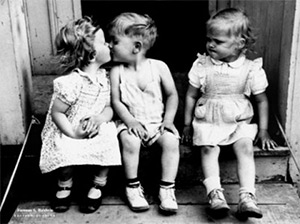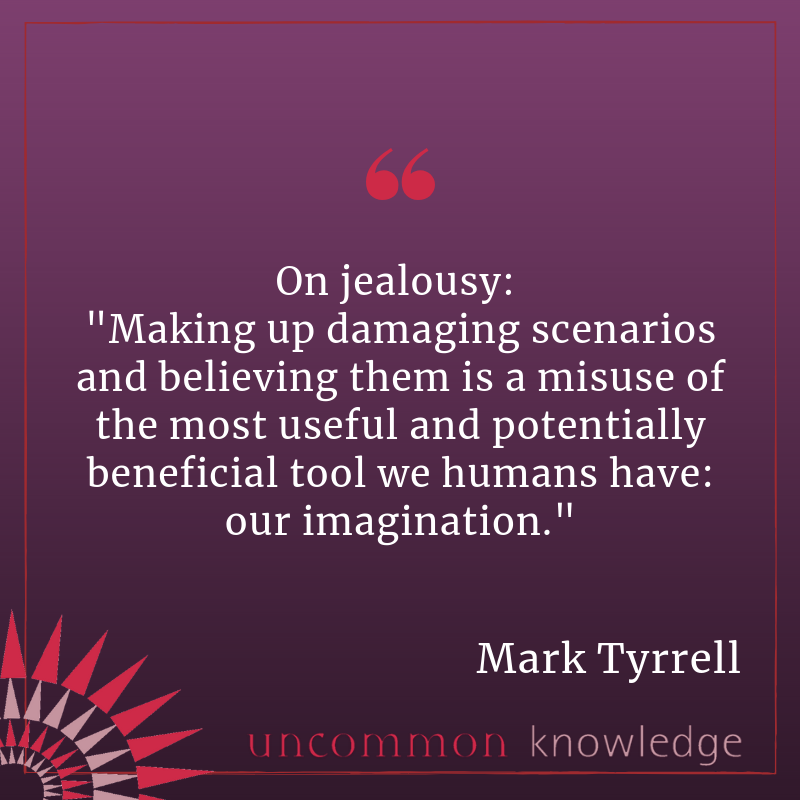
Of course, sometimes people do have perfectly genuine and justifiable reasons to feel jealous
“O, beware, my lord, of jealousy; It is the green-eyed monster which doth mock the meat it feeds on.” – Iago, Othello
Shakespeare famously called jealousy the ‘green-eyed monster’, knowing when we’re consumed by it, we humans can act in pretty monstrous ways.
Accusatory, suspicious, withdrawing affection – we can make life miserable not only for our partners, but for ourselves.
Of course, sometimes people do have perfectly genuine and justifiable reasons to feel jealous. The problem is then situation-related rather than psychology-related.
But if someone is feeling jealous with no real cause or their jealousy has grown way out of proportion to any actual ‘wrongdoing’ of their partner, then that’s where we as therapists and counsellors can make a difference.
Prefer to watch instead?
(By the way, if you’re suffering from jealousy yourself, you might find my article on overcoming jealousy more helpful).
What is jealousy?
When I’m treating the green-eyed monster, I always think it’s worth talking cognitively with the client about what jealousy is.
For example, I would say something like:
“Jealousy is a misuse of the imagination, and imagination can do a pretty good impression of mimicking reality. Just think how often you’ve completely believed a dream was real…until you woke up. That’s why when we’re jealous we start to believe the things we’ve made up in our own heads, and act as if they were real. Like questioning our partner obsessively about their day at work because we’ve spent hours imagining them flirting with their colleague.”
So, apart from emphasizing that imagination is not the same thing as reality, how can we really make a difference to the jealous client who has at least been big enough to come looking for help?
Here are 3 therapy techniques you can use to dispel your client’s jealous obsession:
1. Explore the past
I hate that expression, personally.
‘Exploring the past’ is a phrase that conjures up all those things that are bad about certain forms of psychotherapy:
- Focusing on past hurts at the expense of successes and resources
- Locking people into long-term treatment with no clear therapy goals or end in sight (the trouble with the past is that there tends to be an awful lot of it)
- Holding on to the unfounded dogma that insight into the ‘true origin’ of a problem will be enough to dissolve it
…and so on.
However, we do, of course, need to know something about how patterns of thought behind problems like jealousy may have become established, in order to clearly distinguish the past from the present.
A chronically jealous client will typically have felt bitterly betrayed in some past relationship. They may have been genuinely cheated on and let down. Or they may have developed a ‘materialistic’ style of human relationships, seeing other people as ‘possessions’ to be used and controlled as they see fit.
Discovering where the jealous pattern may have originated is a first step to dealing with it.
2. Separate past from present
‘Once bitten, twice shy’ is the problem in a nutshell for many jealousy clients. Having been cheated on before, they expect their next partner to do the same.
We might ask them to describe at length (and even write down) all the ways their current partner and situation is different from the past partner and circumstances. Such as:
- He always calls if he’s going to be late.
- She hates the previous partner’s favourite food.
- His hair is a different colour.
- She discusses problems in the relationship rather than avoiding them.
This can be a very powerful intervention that gets them to appreciate that then is not now and to stop laying the past on their current partner.
3. Encourage ‘good’ use of the imagination
Making up damaging scenarios and believing them is a misuse of a most useful and potentially beneficial tool we humans have: our imagination. We can help our jealous clients learn how to guide their imagination towards more helpful uses.
Ask about times they get jealous. For example:
- Seeing their partner talking to attractive colleagues at a social function
- When their partner has gone out for the night with their own friends
…and encourage them to see these situations while feeling relaxed and calm, perhaps while they’re enjoying a hot bath or in hypnosis.
The more they mentally rehearse being in these situations while feeling relaxed, the more they’ll train their mind to tag the situation as something not to worry about and create a new pattern match to feel physically calm and relaxed the next time they’re in one of those situations in reality.
In this way, we can begin to separate imagination from emotionality and unhook the old automatic association of jealousy.
It’s also useful to remind clients that no one ever ‘makes a fool of you’ by cheating. They only make a fool of themselves.







